By Tim Kreis
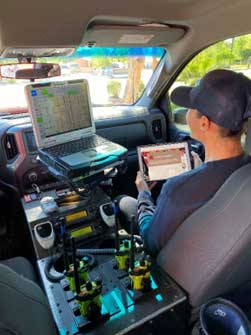
Whether at the highest levels of the United States Fire Administration or fire chiefs from departments big and small, we all recognize the importance of using quality data to drive organizational decisions and planning efforts. For the Phoenix (AZ) Fire Department in 2015, we created an initiative within our five-year strategic plan called “Analysis and Management of Data.” The purpose of this initiative was to improve the systematic examination of data with an emphasis on statistical analysis and data-driven decision making. Due to the size of the Phoenix Fire Department and the complexity of our work, the quantity of information was staggering. Within the guidance of the initiative, recognizing the importance of quality data and data-driven decision making needed to be applied throughout the whole organization.
- Data-Driven Decision Making for the Fire Service
- Big Data in the Fire Service
- Big Data Driving Operational Performance and Fireground Safety
I was promoted to assistant fire chief in 2019 and assigned to oversee the operations division. Like many other leaders within the organization, I kept a copy of several documents on my desk that I frequently referred to. These included labor contracts, our professional standards guide, the Phoenix Fire Department’s strategic plan, Essentials of Fire Department Customer Service by Alan V. Brunacini, and others. Along with the process of assuming my new organizational role, I gathered input from the excellent deputy chiefs and shift commanders we have within the operations division. In these conversations, we considered how we could operationalize data in a new way that focused on fireground effectiveness and safety, all motivated by our strategic plan.
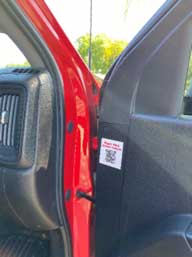
We worked hard to determine the data we wanted, building a series of questions and a vision for our initiative. We facilitated input from battalion chiefs, captains, labor leaders, and others. What we came up with was the fire postincident analysis form. Fire Postincident analysis is a survey designed to be completed by the battalion chief serving as the incident commander of a fire incident. Once operations were concluded and before a postincident critique with the on-scene companies, the battalion chief and the support officer would complete the form in the command post, either in the battalion chief rig or the command van, depending on the scale of the incident. The form resides online and produced stickers with QR links for the command vehicles. Battalion chiefs simply needed to scan the QR code on the dashboard of their truck to access the form. Completing it takes only a couple minutes, and we have found the data invaluable.
Our intent for this article is to share the form and highlight some of the key takeaways. The form has evolved a bit since its creation in 2019, the questions and selection options can be downloaded here (PDF).
What Have We Learned?
With forms submitted from all our command staff, we have data from hundreds of structure fire incidents large and small:
- 24 percent of our fire incidents are presenting as vent-limited.
- 92 percent of the time, the initial strategy is offensive, and only 11 percent of the time we are changing strategies from offensive to defensive.
- We learned that 70 percent of the time, the first engine is establishing a water supply; the remaining times the second engine is laying into the first.
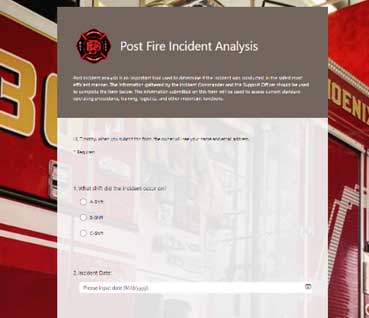
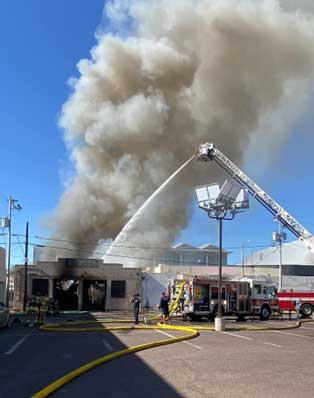
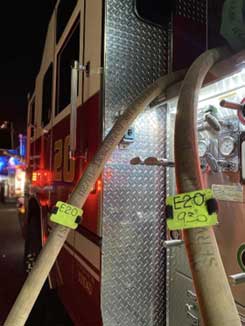
Policy updates and training with the intent of operationalizing the excellent work from Underwriters Laboratories Fire Safety Research Institute is having a major impact. Fifty-one percent of our first water is applied through a transitional attack. We are ventilating buildings 66 percent of the time, utilizing coordinated vertical ventilation, hydraulic, and mechanical ventilation post fire control. When we vertically ventilate, 60 percent of the time one hole is used, and 40 percent of the time we are cutting more than one ventilation hole. Ventilation is being effectively coordinated approximately 90 percent of the time with fire suppression efforts. Also, 72 percent of the time interior crews are reporting that coordinated ventilation is improving conditions for interior efforts.
- Fire Departments and Data: Justifying Your Operations
- Lori Moore: Using Big Data Analytics to Enhance Fire Response Capability
Ninety percent of the time our battalion chiefs are reporting that salvage efforts were effectively coordinated to protect property. Ninety-eight percent of the time, overhaul efforts were appropriately managed and coordinated with investigations, recognizing the importance of preserving potential evidence.
Interestingly, the leading causes of delays in achieving our tactical benchmarks of all clear, fire control, and loss stopped are access challenges and heavy fire conditions slowing search and attack efforts.
Some sort of equipment issue was reported on only 9 percent of our fires and the leading issues involved fire hoses and nozzles, followed by pumpers and aerial apparatus issues. We are very happy to see that there were no firefighter injuries reported on 96 percent of our structure fires.
What Now?
First, the data we are gathering is helping to drive department thinking and initiatives. These include department policy and training. For example, while most of the time we are not having major challenges delaying our ability to achieve our tactical objectives, when we do, the leading causes are related to firefighter access and heavy fire conditions. As a result, we allocated funds within our budget for the procurement of forcible entry training props. Today, we have forcible entry props and other forcible entry training equipment at the training academy and in every fire district. With this equipment and through our labor management process, we have increased forcible entry training within the department. Also, we have taken a hard look at pumpers, fire hose, and nozzle selections. What we have learned through extensive testing and hydraulic measurements is that our 1 ¾-inch attack lines are meeting our needs. After some more hydraulic testing, we found our 2-inch lines were not performing much better that our 1¾-inch lines. We challenged our shift commanders and engine company functions labor management subcommittee with finding a replacement 2-inch line. The directive was to find a 2-inch attack line and nozzle combination with the best balance of manageability, gpm flow, and the least possible nozzle reaction. After completing a series of tests, the group determined that purchasing new 2-inch hose, with large 2 ½-inch couplings, and a smooth bore nozzle would serve us best as an intermediate attack line between the 1¾-inch and 2½-inch smoothbore. These new 2-inch lines and nozzles have been purchased, all members have been trained on its operation, and is now on all 67 Phoenix Fire Department engine companies.
The Indirect Benefits
In the early days of putting the survey questions together and building the process, we were thinking about the indirect benefits. I would contend we have some of the best company officers and battalion chiefs around on the Phoenix Fire Department. They are well trained, experienced, and dedicated fire service leaders. We knew that if we asked them to take a couple minutes to fill this survey once the incident concluded that they would do it and do it well. Also, we knew that the questions we included in the survey, the way we asked them, and how we followed up would have an organizational impact. In other words, we were socializing through a new instrument what is important to us as it relates to fire operations and safety. The survey served as a means for the command team to reflect on these topics immediately after the fire. In addition, we knew that the information in the survey would help to guide tailboard incident critiques and training at the battalion level.
Credit is due to the Phoenix Fire Department fire district commanders and shift commanders that developed and continue to improve our postfire incident analysis process. We have shared this process with many of our regional partners that are now gathering similar fireground operational data. For any of our partners reading this article, if you believe this might be good for your fire department, please feel free to use these questions, improve on them, and share what you are learning. You may have noticed the question referencing the Firefighter Rescue Survey. The Phoenix Fire Department is proud to be participating in this important national initiative and credit to Chief Brian Brush and the other contributors of this worthy fire service project.
Also, you may have seen a question referencing Project Mayday. The Phoenix Fire Department, like many fire departments around the country have been participating in project Mayday. Project Mayday was founded by a fire service legend, Chief Don Abbott. The Phoenix Fire Department was blessed to have Chief Abbott as a member of our organization (family) helping to coordinate the activities of our Command Training Center. We were deeply saddened by his passing and will continue to honor his legacy of operations, training, and firefighter safety.
Special thanks to my counterpart in Operations, Assistant Chief Mark Gonzales, for his contributions to this article. Also, special thanks to Deputy Fire Chiefs Reda Riddle-Bigler, Paul Moore, and Chris Healey for their contributions to our postfire incident analysis survey and this article.
TIM KREIS has served with the Phoenix (AZ) Fire Department since 2002. He is an assistant fire chief assigned to the executive staff and oversees the South Operations and Community Risk Reduction Division. He holds a bachelor of science degree in fire administration and a master of arts degree in organizational leadership/emergency management leadership. Kreis served as an adjunct faculty member for the fire science programs at Phoenix College and Paradise Valley Community College and as an instructor at FDIC International.

